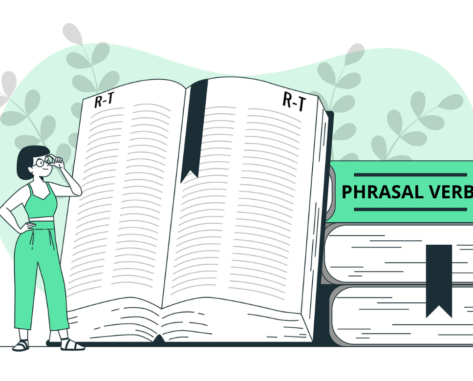LESSON OVERVIEW
The lesson is a series of stand-alone phrasal verb activities that can be used as a revision, warm-up or time filler. There are four types of activities, each with two parts and different phrasal verbs.
C1 / Advanced60 minStandard LessonUnlimited Plan
ASSOCIATIONS: Match phrasal verbs to categories
In this activity, students match phrasal verbs from the list to three categories (e.g. health, relationships, money). After that, they use the phrasal verbs from each category to describe a process or a few steps of an activity related to the categories (e.g. building relationships, getting ill, spending or saving money).
STORYTELLING: Create stories with phrasal verbs
These phrasal verbs activities focus on stories. Students receive a list of six phrasal verbs and the beginnings of two stories. They have to continue the stories using the phrasal verbs. Teachers can give some hints or some sentences for students to facilitate the process. Students can also compare their stories to those in a teacher’s version.
DIALOGUES: Rewrite sentences and build dialogues
In this activity, students rewrite sentences using phrasal verbs with the verb givine in brackets. Then, they put the news sentences in the correct order to create dialogues. Teachers can also ask students to create their own dialogues related to a different aspect of life.
TRIOS: Complete phrasal verb sentences and discuss
These phrasal verb activities are based on the phrases with the same verb or particle. Students read three sentences or questions related to a particular topic. Then, they complete them with the missing verb or particle. Finally, they discuss the questions or agree/disagree with the statements .
If you want to learn more about these phrasal verbs activities and why we have decided to choose these particular ones, read our blog post.
Subscribe to unlock these and many other Standalone lesson lesson plans with the Unlimited planWORKSHEETS













This is an excellent collection of phrasal verb exercises but there is one slight error that caught my attention. In the first exercise, we have “go down with the flu” and the correct phrasal verb is “come down with”. Thank you 🙂
Best regards
Thank you for your comment! The thing is that we can use both phrases https://dictionary.cambridge.org/dictionary/english/go-down-with
why am i being asked to subscribe when I already registered for the free basic plan when i try to access the worksheets?
This worksheet is available only to Unlimited subscribers. And that’s why you see the message to subscribe to get access to this particular lesson. Having the Basic plan, gives you access to lessons tagged Free. You can easily browse only such lessons using our search and filters, like that: https://eslbrains.com/lesson/?ep_filter_lesson_plan=free-english-lesson-plans
This is a great collection of 50+ phrasal verbs. Just one thing, I do find that the introduction of new phrasal verbs within the activity exercises, without any explanation, makes the learning process harder. It might be useful to also have a final list of the sets of phrasal verbs learnt so that students can refer back to them easily when reviewing. Just a thought! 😉
I agree with Ana’s comment. The lesson introduces new phrasal verbs within the activities without explanation. It’s very puzzling for teachers and students. Too many phrasal verbs. It would be useful to have a list of all the Ph.Vs used with examples and some sort of definitions. As it is, I don’t recommend this material, too puzzling…
Hi! Thanks for your comment. This worksheet is a collection of standalone activities that a teacher can use to make students work with phrasal verbs more and retain them better. The activities are not designed to be taught at once 🙂 It’s also our way of illustrating the ideas for phrasal verbs activities we describe here: https://eslbrains.com/teaching-phrasal-verbs-ideas-for-activities/